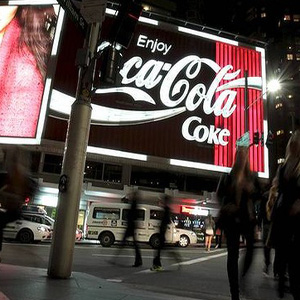Tragically, another young life has been lost in an alleged one-punch assault, this time in Brisbane’s Fortitude Valley.
These assaults are frightening occurrences in themselves, but also they pose much deeper questions regarding our approach to some very complex societal problems.
So far, debate has centred on state liquor law reform but that’s only half the story.
Queensland MPs may also draw some lessons from a recent project by the Designing Out Crime research centre that aimed to tackle similar problems in Sydney’s Kings Cross district.
A fresh approach to an old problem
Sydney’s Kings Cross is historically renowned for its vivid nightlife and, more recently, for its alcohol-fuelled violence.
Over the years, the local and state governments have attempted to reduce this violence by ever-tightening regulations and increasing the police presence in the area. As a consequence, revellers are treated like (potential) criminals rather than young partygoers seeking a good time.
These law and order solutions solve some problems but create others. NSW’s 2014 lockout laws were successful in reducing inner city violence but have led to the closure of many of Sydney’s treasured venues. Residents of other suburbs report fear that lockouts just displace the problem.
In 2012, focus on the precinct intensified after 18-year-old Thomas Kelly was killed by an intoxicated stranger in a one-punch assault. After that incident, designers at the Designing Out Crime research centre, alongside the City of Sydney, took up the challenge of decrypting the Kings Cross nightlife to devise solutions to minimise violence in the area.
Imagine The Big Day Out – every weekend in Kings Cross
The design team approached the problem by imagining Kings Cross as a music festival. The aim was to identify areas of improvement that would create a safer environment while keeping partygoers happy.
A music festival is an organised event that attracts tens of thousands of attendees to a central location to have a good time. Music festivals provide revellers with access to amenities, transportation to and from the event, support and continuous entertainment, while allowing them the necessary freedom to choose activities, socialise and express themselves. This metaphor for an “organised” approach to Kings Cross paved the way for suggested areas for improvement.
The researchers focused their design exploration on two themes: distraction and extraction.
Distraction
It was clear that every night in Kings Cross, pubs and clubs were emptying vast numbers of intoxicated patrons onto the main strip at roughly the same time. Footpaths became congested, retinas were battered with an assault of neon stimuli, patrons were forced to transition quickly from a fun indoor environment to an outdoor “void” atmosphere where there was nothing to do, and nowhere to sit down and sober up. It was a recipe for tension.
They needed distraction.
So the researchers suggested softer outdoor lighting and, on weekend evenings, closing a main street in the Cross to allow patrons to walk on the road and alleviate footpath congestion. We suggested food stalls along this street, new sitting areas and outdoor entertainment in the form of street performers and interactive games. The idea was to promote a process of “unconscious sobering”.
Extraction
On Friday and Saturday nights, Kings Cross was attracting a peak influx of young people arriving at 1am, with the last train leaving shortly thereafter. Revellers were all but stuck in the area, or else waiting in an hour-long queue for an expensive taxi ride.
This fuelled frustration and impatience, paving the way for physical and verbal assaults. Access to toilets was sparse and did not meet demand. In contrast, music festivals are well equipped with portable toilets and access to public transport.
As a result, night buses were improved, amenities added, and volunteer guides were present at peak times to ensure partygoers were well informed and feeling safe. The Safe Space initiative came into fruition to provide support to those who required first aid, a charged phone, transport home or a comfortable place to wait for friends.
Some of the implemented solutions are still in place today, although the legislative measures imposed since have transformed Kings Cross into a less active area.
Lessons for other cities
Sydney and Kings Cross are not alone in facing these issues.
When faced with complex social issues, it is important that time is spent understanding the core of the problem from multiple perspectives before devising solutions.
It is easier said than done, but we need to think away from knee-jerk reactions – where branding an incident as “alcohol-related violence” naturally puts the focus on policies around alcohol service restriction. There is so much more that can be done to keep young people safe at night.
Kees Dorst, Director, Designing Out Crime Research Centre, University of Technology Sydney
This article was originally published on The Conversation. Read the original article.

